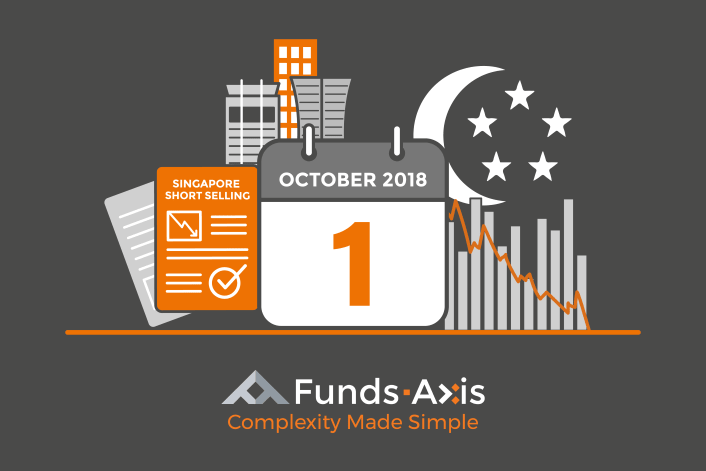Following 4 years of consultations and several minor revisions, the Monetary Authority of Singapore (MAS) under the Securities and Futures (Short Selling) Regulations 2018, is finally due to implement rules requiring investors to report their short positions and short sell orders in securities listed on the Singapore Exchange (SGX). The new rules will enter into force on 1st October 2018.
Having been actively tracking the developments of short selling rules in Singapore from SGX’s initial consultation in August 2010 on the marking of short sale orders, right up to the publication of the Securities and Futures (Short Selling) Regulations 2018, and everything in-between; it is clear that there have been a number of significant changes, including the initial proposal of a 0.05% threshold.
With less than a month to go and after numerous case studies and test submissions, the Funds-Axis Disclosure Team have summarised the final key features of short position reporting rules below:
1. What products are covered?
Securities subject to short sell order disclosures and short position reporting requirements are defined as the following products listed on SGX:
- any share of a corporation (this includes both ordinary and preference shares);
- any unit in a business trust; and
- any unit in a real estate investment scheme.
Derivatives are currently excluded from the determination of a short sell order or short position. However, once they are exercised and obligations are created to deliver or receive the physical delivery of the specified capital markets products, they should be included in the determination of a short position from that point forward.
MAS have also clarified that secondary-listed shares on an approved exchange are also in scope for reporting.
2. Short position thresholds?
A short position has to be reported to MAS if it reaches or exceeds the lower of:
- 0.2% of total issued shares in the relevant class of shares or units; or
- S$ 2,000,000.
3. When to determine a reportable short position and what is the deadline?
Short positions are determined on the Position Day, which is the last trading day of each week (typically a Friday), and must be reported within 2 business days from the Position Day (i.e. usually a Tuesday). This replicates the Hong-Kong Short position reporting timeline.
4. Calculating your short position?
A short position is determined according to the respective definitions under section 137ZH of the Securities and Futures Act, which requires your short position be netted against your long interest in a product, and not the gross amount that has been short sold as part of a transaction.
5. How do I report short positions?
Short positions must be reported online via the Short Position Reporting System (SPRS). For first time users, you need to set up an SPRS user account before you can submit short position reports.
It only takes about 5 minutes to set up an SPRS user account under User Registration – there’s a helpful step-by-step user guide available on the SPRS website.
6. What about situations with multiple Fund Managers which have discretionary mandates?
Importantly, MAS allows Investors and discretionary Fund Managers the option to report their aggregated net short position of a class at either Fund Manager or Investor Level. Regardless of the approach taken it must be applied consistently over time so as not to distort the informational value of data.
7. Where can I find information on short positions?
MAS will publish aggregated short positions of each security on Wednesday of each week. Identities of short sellers will not be disclosed.
Market participants can also access the SPRS and familiarise themselves with the system before mandatory reporting commences on 1 October 2018.
Request our Briefing Paper for additional information.
How Funds-Axis can help?
We are able to monitor your daily short positions in Singapore through our shareholder disclosures technology, in addition to your positions against 350 disclosure rules in 80+ jurisdictions. Disclosures and disclosure alerts can be easily viewed and checked, with the information automatically populating the required disclosure form ready for submission to the regulator. You will be supported by our team of disclosures experts who keep up-to-date with regulatory changes and are available to answer any of your disclosures queries. This together with our fully managed service takes the complexity out of shareholder disclosures monitoring.
Click on the link for more information on the Funds-Axis Shareholder Disclosures solution or click arrange a demo at the top of the page.












